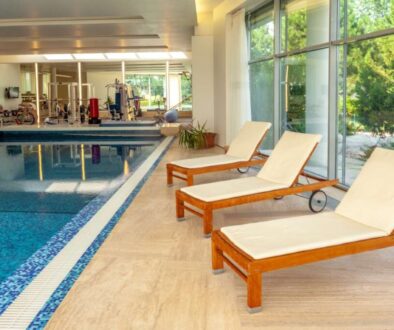Establishing a Productive Office Layout
Discover the key elements to establish a productive office layout that enhances efficiency, creativity, and employee satisfaction in your workspace.
In the current era of remote work and flexible arrangements, the design of your physical office space is more crucial than ever. A well-thought-out office layout not only optimizes the use of space but also enhances productivity, fosters collaboration, and promotes employee well-being. This blog post will explore essential principles of creating a productive office layout, including the importance of space planning, furniture selection, and the integration of technology. By enhancing your office environment, you set the stage for a thriving workplace that meets the needs of your team and your business goals.
IntroductionThe layout of an office plays a significant role in defining the work culture and productivity levels within an organization. With the rise of remote working, many companies are reevaluating their physical spaces to create an environment that inspires employees to return to the office and fosters creativity and collaboration. This blog will delve into the critical factors that contribute to a productive office layout, including the arrangement of workstations, the choice of furniture, and the incorporation of modern technologies. Whether you’re redesigning an existing space or starting from scratch, understanding these elements is key to establishing a workspace that enhances performance and supports employee satisfaction.Understanding the Importance of Space Planning
– Effective space planning is foundational to creating a productive office layout. It involves analyzing and organizing the available space to maximize functionality and comfort. Poorly planned office layouts can lead to inefficiencies, distractions, and a lack of collaboration among team members. According to a study by the International Association of Workplace Professionals, 68% of employees feel more productive in a well-organized workspace.- When designing your office layout, consider the types of work that will be performed in the space. Will team collaboration be a priority? Or is the focus more on individual tasks? By assessing the needs of your employees, you can create functional areas that cater to different work styles. For example, incorporating open spaces for teamwork and brainstorming sessions alongside quiet zones for focused work can significantly enhance productivity.- Additionally, the flow of movement within the office is crucial. Ensure that pathways are clear and that employees can easily navigate between different areas without obstruction. This not only facilitates collaboration but also promotes a sense of community within the workplace.
Furniture Selection: Comfort Meets Functionality
– The choice of furniture is another vital component in establishing a productive office layout. Ergonomic furniture that prioritizes comfort and posture can greatly impact employee health and productivity. A study by the Occupational Safety and Health Administration (OSHA) found that investing in ergonomic office furniture can lead to a 25% increase in employee productivity.- When selecting desks and chairs, consider adjustable options that accommodate a variety of body types and preferences. Standing desks, for instance, are gaining popularity as they encourage movement and help reduce the risks associated with prolonged sitting. Pairing them with seating options that offer proper lumbar support will ensure employees can work comfortably throughout the day.- Additionally, collaborative furniture, such as modular seating and movable desks, can facilitate teamwork and adaptability within the office. This flexibility allows for quick reconfigurations as team dynamics and project needs evolve, making it easier to foster collaboration and creativity.
Incorporating Technology for Enhanced Productivity
– Technology plays a crucial role in modern office layouts, driving efficiency and facilitating communication. Incorporating smart technology into your office space can streamline operations and enhance collaboration. For instance, utilizing wireless charging stations and integrated power outlets allows employees to stay connected without the clutter of cords and cables.- Also, consider implementing interactive whiteboards and smart conference room technology. Tools like video conferencing systems enable remote employees to participate in meetings seamlessly, bridging the gap between in-office and remote work. This hybrid approach can lead to increased productivity by ensuring all team members can contribute fully, regardless of their location.- Furthermore, leveraging software solutions for project management and communication can optimize the workflow within your office. Platforms like Slack or Trello can enhance collaboration and communication among team members, ultimately leading to improved project outcomes.
Creating Zones for Different Work Styles
– A productive office layout often includes designated zones that cater to various work styles and needs. By creating distinct areas for collaboration, focused work, and relaxation, you can accommodate the diverse preferences of your employees. This zoning approach not only enhances productivity but also contributes to a positive work environment.- Collaboration zones, such as open meeting areas and brainstorming spaces, can encourage creativity and teamwork. These spaces should be equipped with the necessary tools, like whiteboards or digital screens, to facilitate discussions and idea-sharing among team members.- On the other hand, quiet zones are essential for employees who require concentration and minimal distractions. These can include soundproof booths or designated quiet rooms where team members can focus on their tasks without interruptions. Providing a balance between collaborative and quiet spaces is key to catering to the varying work preferences of your staff.
Incorporating Biophilic Design Elements
– The concept of biophilic design emphasizes the connection between nature and the built environment. Incorporating natural elements into your office layout can significantly enhance employee well-being and productivity. Research has shown that access to natural light, plants, and outdoor views can reduce stress and improve focus.- Consider designing your office with ample windows to maximize natural light. If possible, include outdoor spaces, such as terraces or gardens, where employees can take breaks and connect with nature. Even indoor plants can create a calming atmosphere and improve air quality, contributing to a healthier work environment.- Additionally, utilizing natural materials in your office design, such as wood and stone, can create a warm and inviting atmosphere. This connection to nature can help reduce employee stress and promote a sense of well-being in the workplace.
Flexibility in Office Layouts
– Flexibility in office layouts is crucial to accommodate the evolving needs of businesses and employees. As work practices change, the ability to adapt your office layout becomes essential for maintaining productivity and employee satisfaction. This is particularly important in today’s dynamic work environment.- Consider designing spaces that can be easily reconfigured as team sizes and project needs fluctuate. Movable furniture, such as chairs and tables on wheels, can facilitate quick adjustments to accommodate various group sizes and activities.- Furthermore, creating a culture of flexibility involves encouraging employees to choose where and how they work best. Providing options for remote work and flexible schedules can lead to higher job satisfaction and productivity. The key is to foster an environment that values adaptability and supports employees in their individual work preferences.
Encouraging Employee Input in the Design Process
– One of the most effective strategies for creating a productive office layout is to involve employees in the design process. Gathering input from team members can provide valuable insights into their needs and preferences, ensuring that the final layout aligns with their expectations.- Conducting surveys or focus groups can be an excellent way to gather feedback on various aspects of the office design, including furniture choices, workspace configurations, and technology needs. By actively engaging employees in the decision-making process, you foster a sense of ownership and investment in the workspace.- Additionally, consider forming a design committee that includes representatives from different departments. This diverse perspective can lead to a more comprehensive understanding of the unique requirements of various teams, ultimately resulting in a more effective office layout.
Conclusion
– In summary, establishing a productive office layout requires careful consideration of space planning, furniture selection, technology integration, and employee input. By creating a workspace that accommodates diverse work styles and fosters collaboration, you set the stage for enhanced productivity and employee satisfaction.- The significance of a well-designed office cannot be overstated. It not only influences the daily operations of your business but also shapes the experiences of your employees. As you embark on the journey to enhance your office layout, remember to prioritize the needs of your team and embrace flexibility in design.- Embrace the opportunity to create a vibrant and engaging workspace that inspires creativity and collaboration. Start exploring ways to optimize your office layout today, and watch as it transforms your workplace into a hub of productivity and success.



